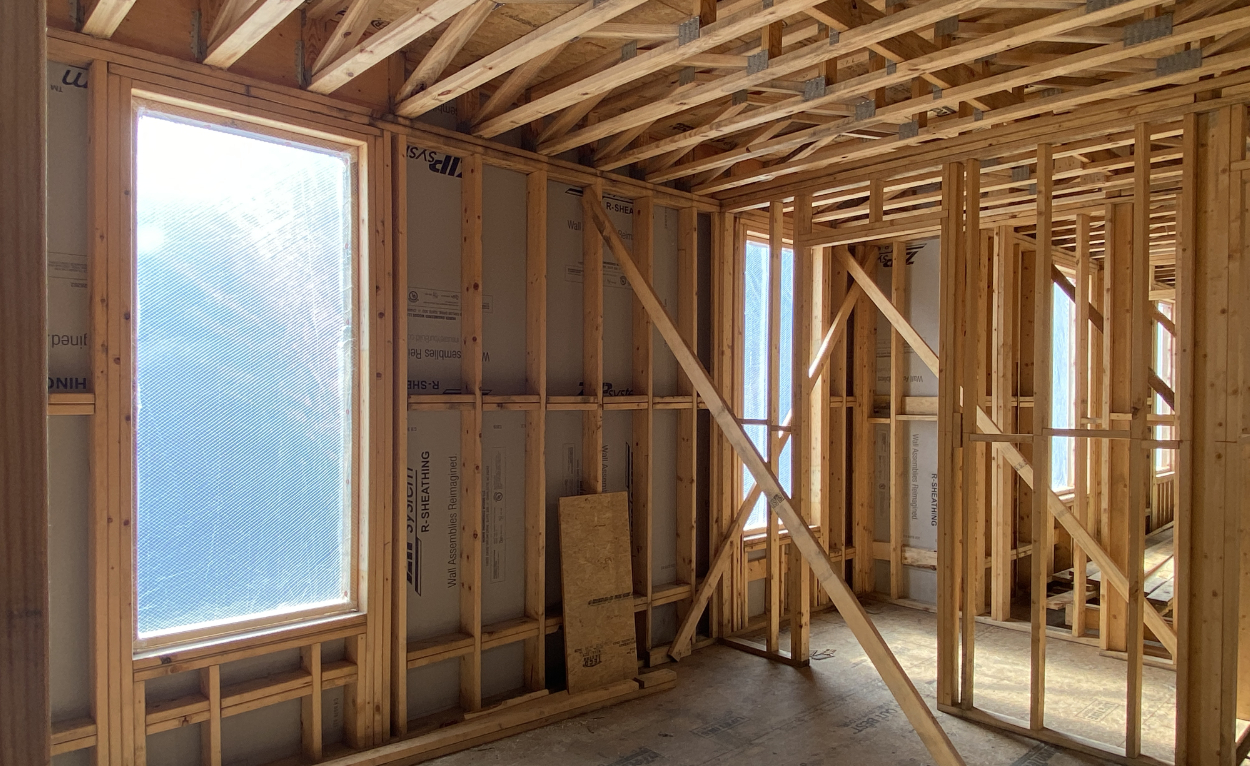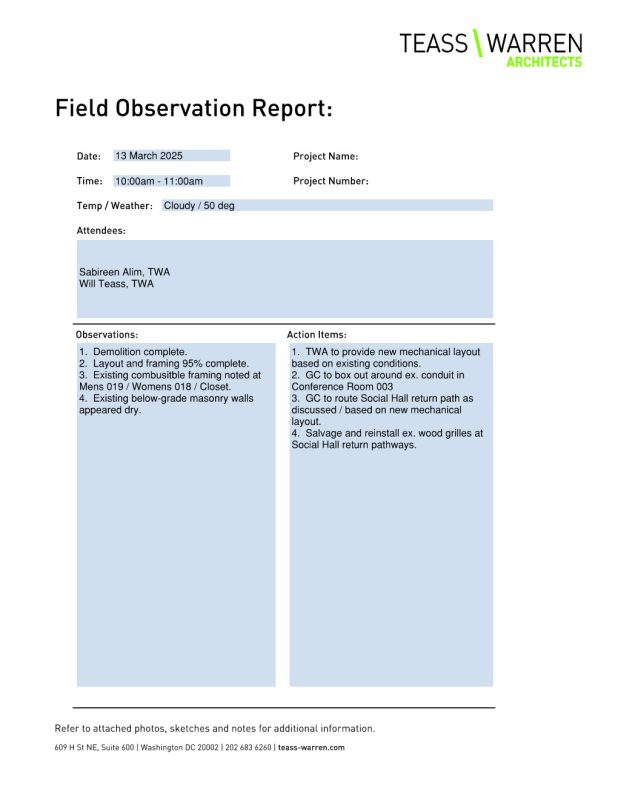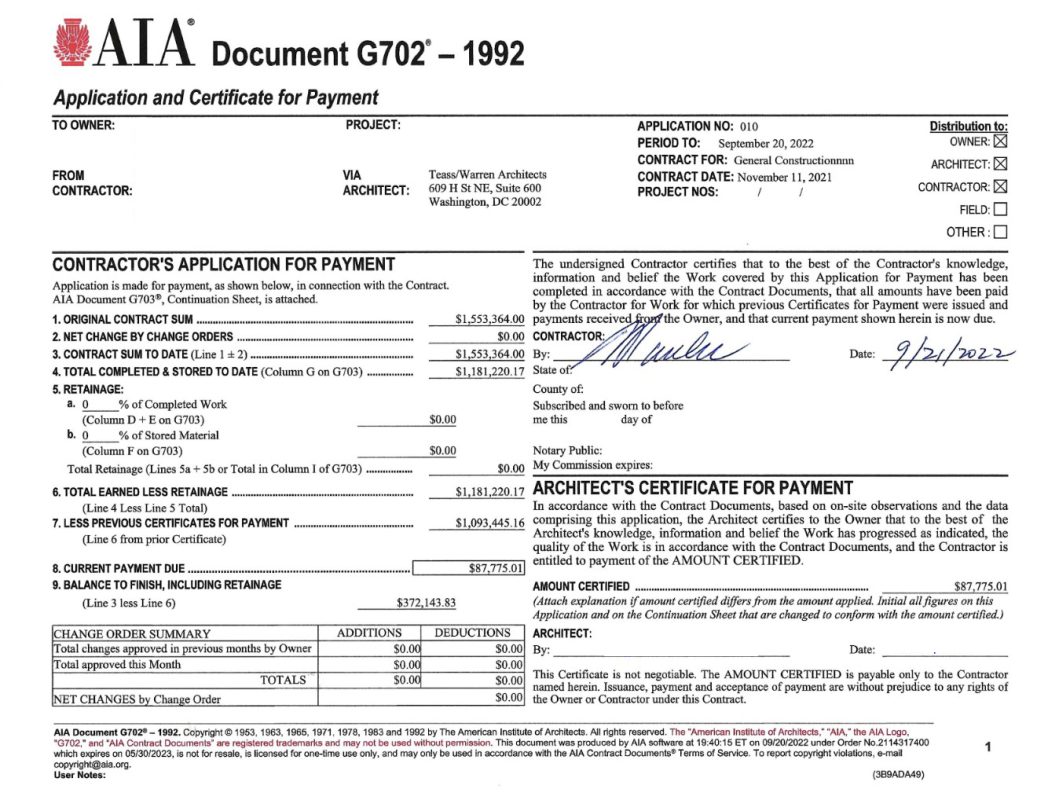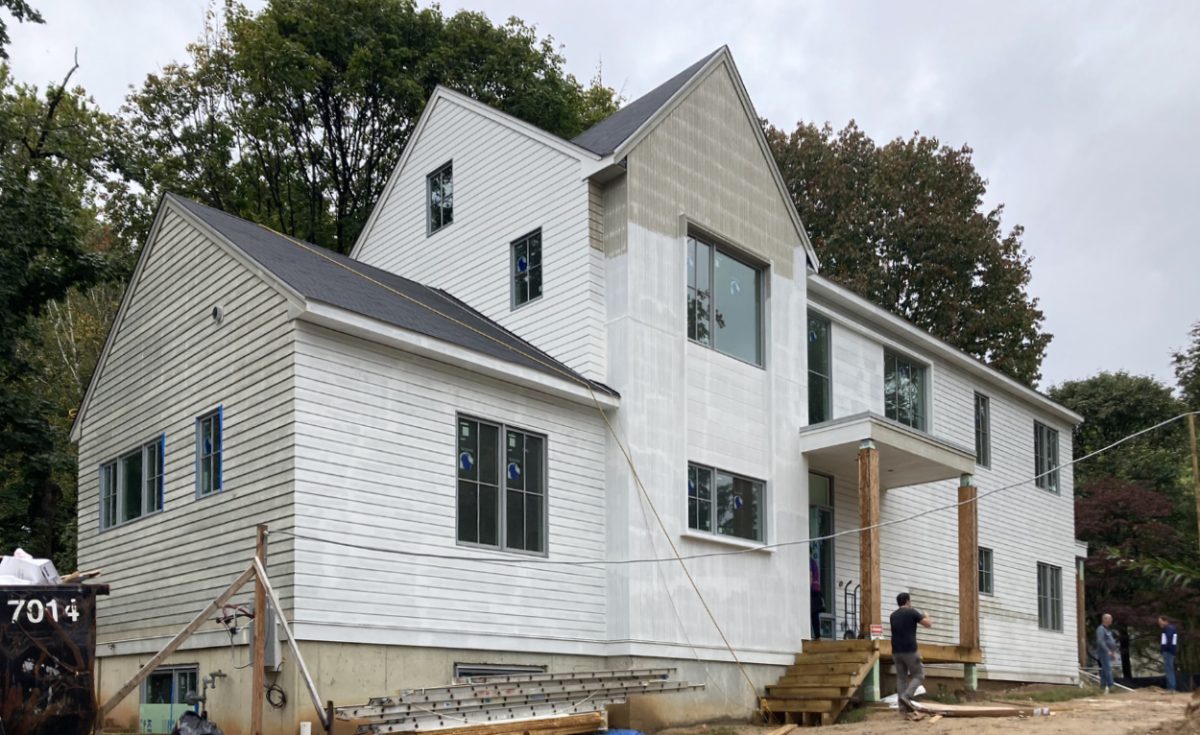The Architect’s Role in Construction Administration

The Construction Administration Phase (also called Construction Contract Administration or simply “CA”) is a critical period in any building project. While the contractor is responsible for executing the work, the architect plays an essential role in ensuring that the built result aligns with the design intent developed in the Construction Documents Phase and serves the owner’s interests and protects their investment. In this journal entry, we break down key themes about this phase and what services we provide during this dynamic and exciting part of the design and construction process.
Primary Goals of Construction Administration
The fundamental goal of Construction Administration is to ensure that construction adheres to the design intent established in the construction drawings. Architects act as stewards of that intent by bridging the gap between vision and execution. This includes monitoring construction progress, clarifying questions from the contractor, and helping to resolve issues that arise in the field. We fundamentally see the architect’s role as non-adversarial. In our view the construction process is a collaborative effort where we work to support the contractor (while, of course, protecting the interests of our client) in achieving the shared goal of a successfully built project.

Construction Administration – Site Visits
Factors to Ensure Smooth Construction
A smooth construction phase doesn’t just happen because of good luck. It’s the result of a robust Bidding and Negotiation Phase, careful planning, clear communication, and a strong collaborative relationship between the owner, architect, and contractor. While unexpected challenges are a normal part of any building project, certain key factors can significantly reduce friction and help keep things on track. From clear documentation to realistic expectations, here are some of the elements that contribute to a successful Construction Administration process:
- Clear and thorough documentation is essential. We work hard to produce drawings that are clear and well-coordinated. This helps prevent many of the issues that may arise during construction.
- Effective communication and regular meetings keep all parties aligned.
- A reasonable budget and schedule, paired with contingency planning, help manage expectations and avoid delays. (Again, see the Bidding Negotiation Phase).
- Strong project partners. A good team is absolutely critical.
- Realistic expectations from the owner – construction is a messy process, and it’s important to understand that schedules are variable and progress is not always linear.
- Having one point of final decision-making helps avoid conflicting directions.
- A reasonable amount of patience, timely payments by the owner, and an understanding that some issues are inherent to construction can go a long way in preventing conflict.
What Can Owners Do to Minimize Headaches During CA?
While much of the construction process is in the hands of the contractor and architect, owners still play an important role in keeping things running smoothly. The right level of involvement, and the right mindset, can help avoid delays, reduce stress, and support a more successful outcome. Here are some practical ways owners can contribute to a more efficient and positive construction experience:
- Trust the process and the professionals they’ve hired.
- Avoid micromanagement; too much owner involvement in day-to-day construction can cause confusion and delay.
- Don’t try to live with construction. For the residential client we always recommend not trying to live in the house during construction. It is a messy process and should be avoided.
- Make timely decisions when needed and delegate one point of contact for efficient communication.
- Make payments on time.
- Understand that change orders will arise. Not all change orders are to add costs to a project; some may result in credits or simply adjust construction schedule timelines.
- Prepare for the ongoing responsibilities of ownership, including understanding how to operate and maintain complex systems post-occupancy.

CA – Field Report
What is the Architect’s Role During Construction?
An architect’s role doesn’t end when construction begins. During the Construction Administration phase, architects stay actively involved to help ensure the project is built according to the design intent, to support the contractor with technical guidance, and to advocate for the owner’s interests. Their ongoing responsibilities help keep the project stay on track. Here are some of the key tasks architects handle during construction:
- Responding to RFIs (Requests for Information) from the contractor.
- Issuing Sketches in Response to the RFI’s
- Reviewing submittals and shop drawings to confirm alignment with the construction documents.
- Visiting the site to observe progress and generate field reports.
- Certifying applications for payment (like the AIA G702), reviewing work in place and materials stored on site.
- Assisting in resolving field conditions and unforeseen challenges.
- Facilitating closeout, including reviewing punch lists and verifying substantial completion.
- Providing post-occupancy guidance, such as maintenance schedules and sustainability tips.

Construction Administration – Sketch
What Don’t Architects Do During Construction?
Just as architects have specific responsibilities during construction, there are also clear limits to their role. Understanding what architects are not responsible for helps clarify expectations and avoid confusion on site. The contractor manages construction operations, while the architect provides oversight and guidance related to the design and conformance to the construction documents. Below are some common misconceptions about what falls outside the architect’s scope of services. Here’s what architects don’t do:
- Do not manage the construction or act as the contractor.
- Do not purchase or install materials or subcontract the work.
- Do not ensure site safety (though they make observations and may note hazards or safety issues the contractor would need to address).
- Do not guarantee the contractor’s performance, schedule, or budget.
- Do not direct the “means and methods” of construction. In simple terms, the architect tells the contractor the destination but not how to get there. The contractor will use their expertise to figure out the best pathway.

CA – Application For Payment
This distinction is especially important when comparing architects with design-build firms. Architects advise and observe but they are not performing the construction. This is worthy of another journal entry describing the differences and pros and cons of design-build versus the more traditional architect/contractor relationship.

CA – Exterior Construction Progress
How Do Architects Assist with Closeout Processes?
As construction wraps up, closeout ensures the building is completed properly and handed over in a usable and occupiable state. Architects play a key role in this final stage by confirming that the project adheres to the contract documents, reviewing final pay apps, and releasing of retainage. Here’s how architects help bring a project to a successful close:
- Assist with punch list development and verification.
- Certify substantial completion.
- Review and certify final application for payment including releasing retainage..
The architect also works with the general contractor on these items:
- Assembling a list of subcontractors for the owner’s reference.
- Assembling operation manuals and as-built drawings if required
- Helping owners understand system operations through maintenance schedules or post-occupancy guides.
- Warranty management by clarifying responsibilities and ensuring issues are addressed.

CA – Interior Construction Progress
Conclusion
While it can be daunting, construction is the most exciting part of the project. It’s where all the design and planning efforts come to life in built form. The Construction Administration phase is a collaborative effort where architects, contractors, and owners work together to achieve the project goals. Ideally, the result is not only a successful project but also a strong working relationship that benefits everyone involved.

